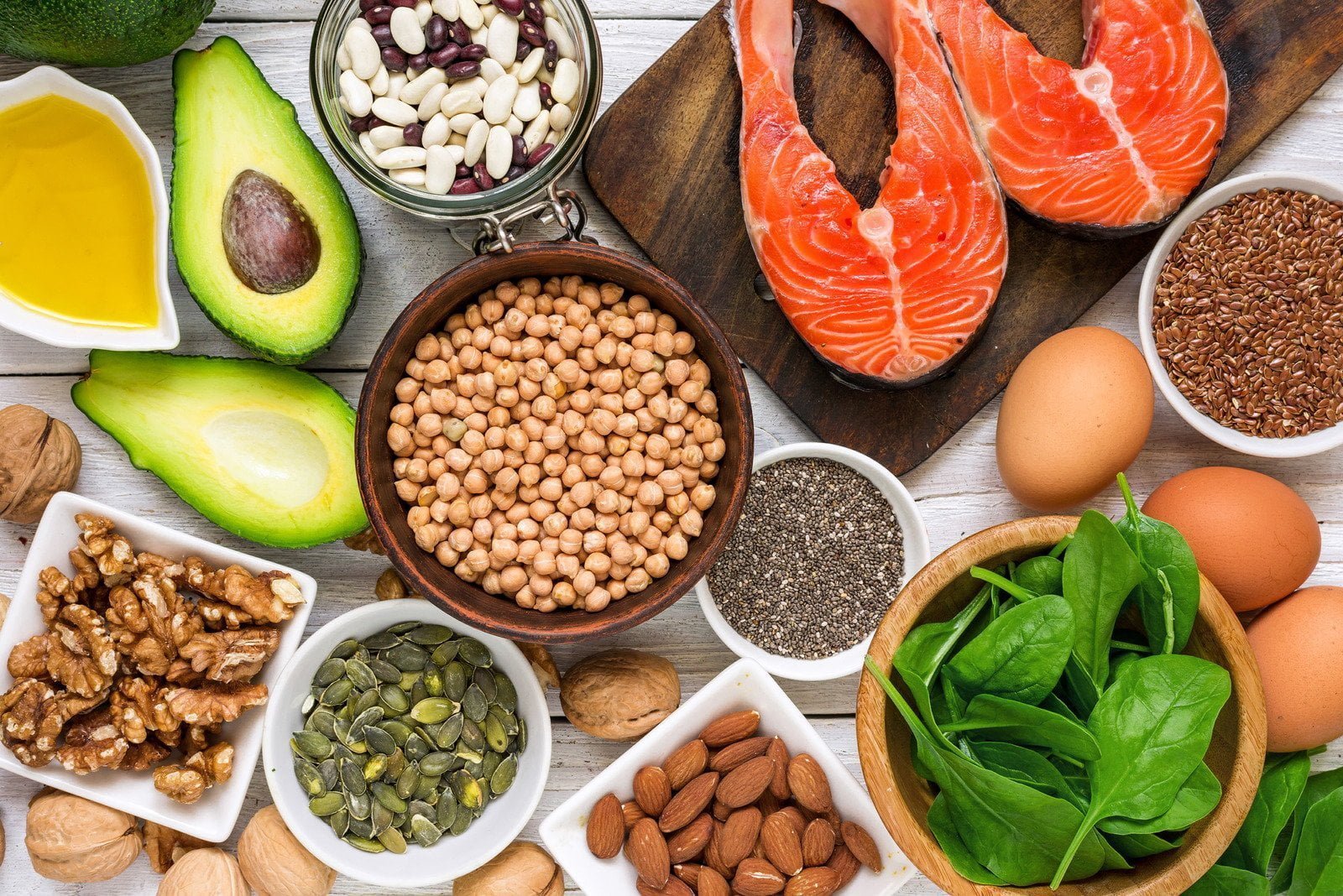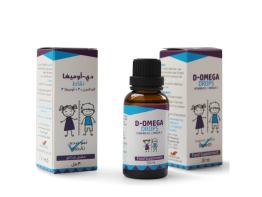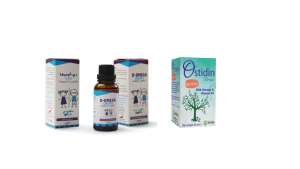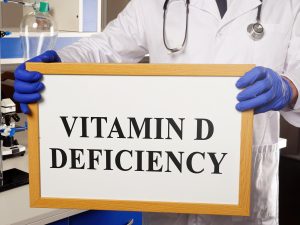Omega-3 fatty acids are essential nutrients vital for cognitive and physical growth. They are especially crucial for children, as they support brain development, boost the immune system, and improve heart health. While many parents turn to fish as the primary source of Omega-3, other foods can contribute to a child’s daily intake of these essential fatty acids. Here are eight foods rich in Omega-3 that are perfect for children.
1. Salmon
Salmon is one of the most highly recommended sources of Omega-3 fatty acids, making it an essential food for children. Here’s an in-depth look at why salmon is a standout choice:

Nutritional Profile of Salmon
Salmon is packed with Omega-3 fatty acids, specifically EPA (eicosapentaenoic acid) and DHA (docosahexaenoic acid), essential for heart health, brain development, and the immune system. It also contains an impressive range of other nutrients, including protein, B vitamins, vitamin D, magnesium, and selenium.
Health Benefits of Salmon
- Brain Development: The Omega-3 fatty acids in salmon aid in children’s cognitive development, improving memory, concentration, and learning abilities.
- Heart Health: Regular consumption can lead to lower cholesterol levels and reduced risk of heart diseases.
- Immune Support: Omega-3s support the immune system and may reduce inflammation.
- Bone Health: The vitamin D content in salmon helps to strengthen bones and teeth.
Creative Ways to Serve Salmon to Kids
Certainly! Serving salmon to children might be challenging if they’re picky eaters or not used to fish. But salmon is a versatile ingredient; with some creativity, you can prepare it in ways that most children will love. Here’s a list of creative ways to serve salmon to kids:
- Salmon Fish Sticks: Cut salmon into finger-sized pieces, bread them, and bake or lightly fry. Serve with a favorite dipping sauce like ketchup or homemade tartar sauce.
- Salmon Patties or Burgers: Combine flaked salmon with breadcrumbs, herbs, and spices to form patties, then grill or pan-fry. Serve on tiny buns with lettuce, tomato, and a tasty sauce.
- Salmon Pasta Salad: Toss grilled or baked salmon with pasta, veggies, and a child-friendly dressing like ranch or Italian dressing.
- Salmon Sushi Rolls (Cooked): If your child enjoys sushi, make simple rolls with salmon, avocado, cucumber, and sticky rice.
- Salmon Quesadillas: Mix salmon with cheese and fold it into a tortilla. Grill until crispy. Cut into triangles for a fun shape.
- Salmon and Cream Cheese Pinwheels: Spread cream cheese on a whole-wheat tortilla, add flaked salmon, roll it up, and slice it into little pinwheels.
- Salmon Mac and Cheese: Incorporate flaked salmon into mac and cheese for a protein boost.
- Salmon Pizza: Use salmon as a topping on homemade pizza with other favorite toppings.
- Baked Salmon Nuggets: Shape salmon into small nuggets, coat with breadcrumbs, and bake. Serve with dipping sauces.
- Grilled Salmon Kabobs: Thread salmon cubes with colorful veggies and grill onto skewers. Make sure to use age-appropriate skewers or remove skewers for very young children.
- Salmon Wraps: Place flaked salmon in a wrap with shredded lettuce, cheese, and a mild salsa or yogurt sauce.
- Salmon Stuffed Potatoes: Mix baked salmon into mashed potatoes and stuff into potato skins or bell peppers, then bake until golden.
- Salmon and Veggie Pockets: Place a piece of salmon, some thinly sliced veggies, and a pat of butter in a foil packet and bake.
- Salmon Tacos: Serve flaked salmon in small taco shells with shredded lettuce, cheese, and a mild taco sauce.
- Salmon Risotto Bites: Mix flaked salmon into a risotto, shape it into small balls or patties, and bake until golden.
- Salmon and Cheese Muffins: Incorporate salmon into a savory muffin recipe with cheese and herbs.
- Salmon Breakfast Scramble: Mix flaked salmon into scrambled eggs with cheese and serve with toast.
- Salmon and Veggie Fritters: Blend salmon with grated vegetables like zucchini or carrots, form into patties, and pan-fry.
- Salmon Sushi Bowls (Cooked): Create a deconstructed sushi bowl with cooked salmon, rice, avocado, and other kid-friendly veggies.
- Salmon Dip: Make a mild salmon dip with cream cheese and herbs, and serve with crackers or vegetable sticks.
These ideas combine the health benefits of salmon with flavors and textures that children typically enjoy. Introducing salmon in familiar and fun ways might make it a new favorite in your family’s meal rotation.
Salmon’s rich Omega-3 content and other nutrients make it a valuable addition to a child’s diet. With various ways to prepare and serve it, it’s a versatile food for children of all ages. If your child is new to salmon, starting with familiar flavors and textures can make the introduction more appealing.
2. Eggs
Eggs are another versatile and nutritious food source that can benefit children. Here’s a closer look at eggs, focusing on their nutritional content, health benefits, ways to serve them to kids, and other aspects.
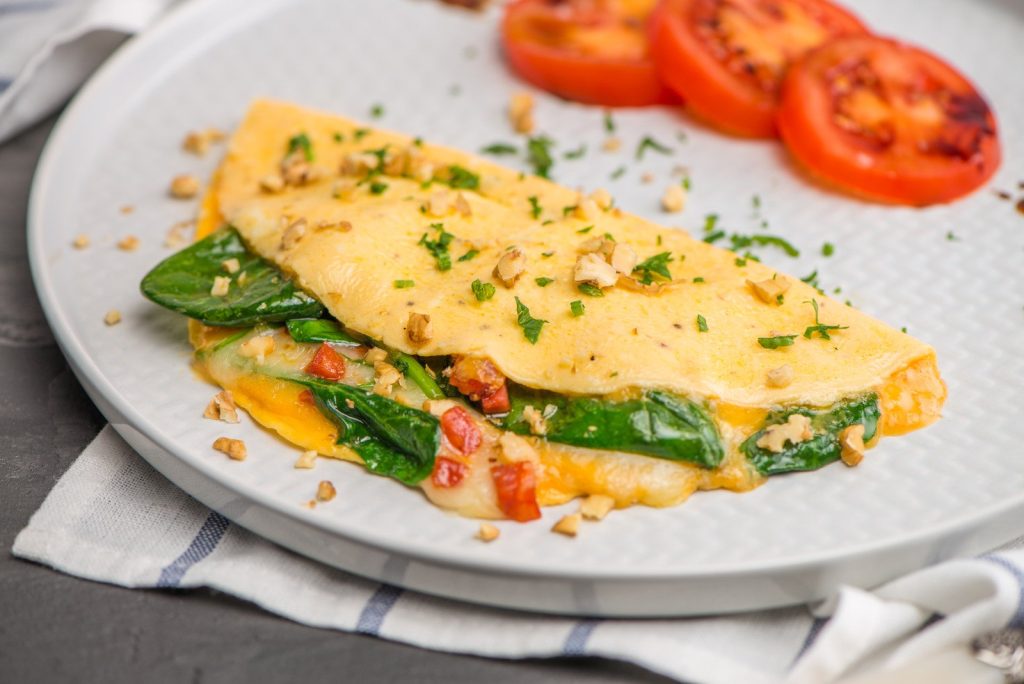
Nutritional Profile of Eggs
Eggs are a powerhouse of essential nutrients, including:
- Omega-3 Fatty Acids: Some eggs, specifically those labeled as Omega-3 enriched, contain higher levels of Omega-3 fats. These are usually derived from hens fed Omega-3-rich diets, such as flaxseed.
- Proteins: Eggs are an excellent source of high-quality protein, containing all the essential amino acids.
- Vitamins: Rich in vitamins A, D, E, B12, and riboflavin.
- Minerals: Contain essential minerals such as iron, zinc, and phosphorus.
Health Benefits of Eggs
- Brain Development: Omega-3 fatty acids in eggs contribute to brain development and function.
- Muscle Growth: The protein in eggs supports muscle growth and repair.
- Eye Health: Lutein and zeaxanthin, two antioxidants found in egg yolks, help protect eye health.
- Immune Support: Vitamins and minerals in eggs help boost the immune system.
Ways to Serve Eggs to Kids
- Scrambled Eggs: Soft and easy to eat, often favored by younger children.
- Omelets: Can be filled with vegetables and cheese for a nutritious meal.
- Hard-Boiled Eggs: Perfect for lunchboxes or as a snack.
- Baked Egg Muffins: With vegetables and meat for a balanced meal.
- French Toast: For a sweeter breakfast option.
Eggs are an inexpensive and widely available source of high-quality nutrients. The potential Omega-3 content in certain eggs adds value to a child’s diet. With so many ways to cook and serve them, eggs can easily be included in daily meals. Whether hard-boiled for a snack or scrambled for breakfast, eggs offer a convenient way to provide essential nutrients, including Omega-3 fatty acids, to children’s diets. They are indeed a staple food item that can fit into various culinary traditions and dietary preferences.
3. Avocado
Avocado is a unique and highly nutritious fruit known for its creamy texture and mild flavor. Here’s a detailed look at avocados, including their nutritional content, health benefits, ways to serve them to kids, and more.
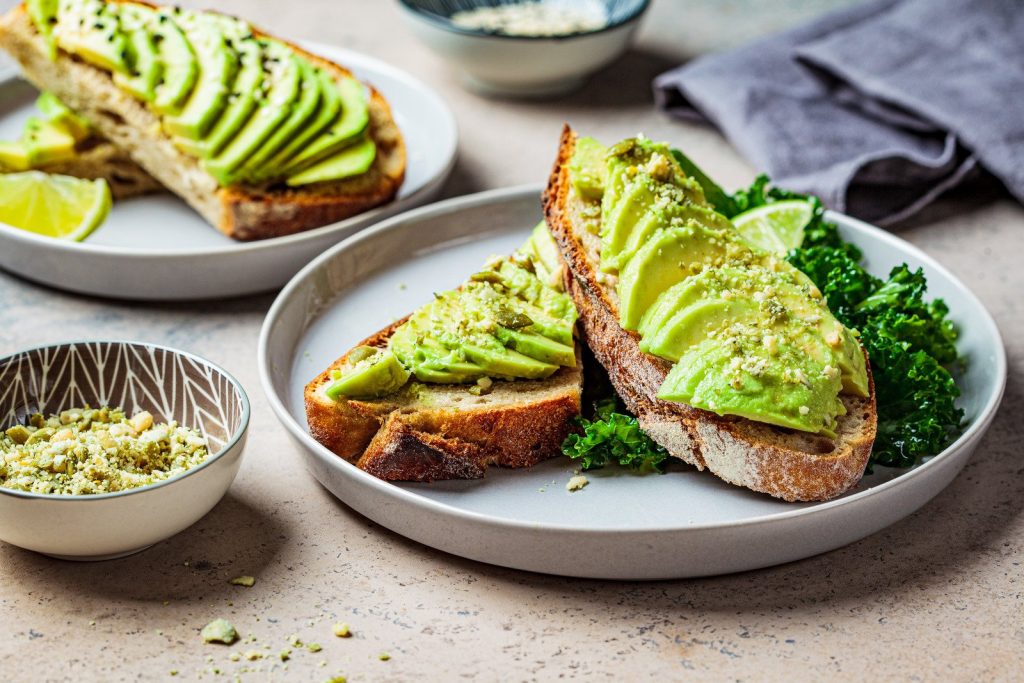
Nutritional Profile of Avocado
Avocado is packed with a wide variety of nutrients, such as:
- Omega-3 Fatty Acids: Avocado contains Alpha-linolenic acid (ALA), a plant-based Omega-3 fatty acid.
- Healthy Fats: Rich in heart-healthy monounsaturated fats.
- Vitamins: Excellent source of vitamins like vitamins K, C, E, and several B vitamins.
- Minerals: Contains potassium, magnesium, and other essential minerals.
- Fiber: High in dietary fiber, beneficial for digestion.
Health Benefits of Avocado
- Heart Health: The monounsaturated fats, Omega-3 fatty acids, and other nutrients in avocados support heart health.
- Weight Management: The healthy fats and fiber content can promote feelings of fullness, aiding in weight management.
- Eye Health: Contains lutein and zeaxanthin, antioxidants known to benefit eye health.
- Digestive Health: The fiber in avocados helps support healthy digestion and prevent constipation.
Creative Ways to Serve Avocado to Kids
Avocado is a nutritious, creamy, versatile fruit that can be used in various child-friendly dishes. Here are some creative ways to serve avocados to kids:
- Avocado Smoothies: Blend avocado with yogurt, banana, and honey for a creamy and nutritious smoothie.
- Stuffed Avocado Boats: Halve an avocado and remove the pit. Fill the hole with tuna salad, chicken salad, or scrambled eggs.
- Avocado Pancakes: Mix mashed avocado into pancake batter for a healthy twist on traditional pancakes.
- Avocado Toast Shapes: Spread mashed avocado on whole grain bread and cut into fun shapes using cookie cutters.
- Avocado Chocolate Pudding: Blend avocado with cocoa powder, vanilla, and a sweetener for a healthy and creamy chocolate pudding.
- Avocado Ice Pops: Puree avocado with coconut milk and a little sugar, then freeze in popsicle molds for a healthy treat.
- Avocado Dip with Veggie Sticks: Mash avocado with a touch of lemon or lime juice and serve with carrot sticks, cucumber slices, or bell pepper strips.
- Avocado Pasta Sauce: Blend avocado with garlic, lemon juice, and olive oil for a creamy pasta sauce.
- Avocado and Cheese Quesadillas: Add thin avocado slices to a cheese quesadilla before grilling.
- Avocado Sushi Rolls: Make kid-friendly sushi rolls with avocado, cooked chicken, and sticky rice.
- Baked Avocado Fries: Slice avocado into sticks, coat with breadcrumbs, and bake until crispy.
- Avocado Muffins or Brownies: Incorporate mashed avocado into muffin or brownie recipes as a healthy fat substitute.
- Grilled Avocado: Cut an avocado in half, remove the pit, brush with olive oil, and grill for a smoky flavor.
- Avocado Breakfast Cups: Place a small egg in an avocado half where the pit was, and bake until the egg is set.
- Avocado Fruit Salad: Mix avocado cubes with kid-friendly fruits like strawberries, pineapple, and grapes.
- Avocado Yogurt Dip: Blend avocado with Greek yogurt, garlic, and herbs for a tasty dip for crackers or pita bread.
- Avocado Wraps: Use slices of avocado in wraps with turkey, cheese, and lettuce.
- Creamy Avocado Popsicles: Blend avocado with lime juice and sweetener, then freeze for a refreshing popsicle.
- Avocado Chicken Salad: Mash avocado and mix with shredded chicken, a bit of mayo, and seasonings for a sandwich or wrap filling.
- Avocado and Banana Sandwich: Spread mashed avocado and banana on whole-grain bread for a quick and healthy sandwich.
Avocado is a valuable addition to a balanced diet, especially for children. The rich content of Omega-3 fatty acids, healthy fats, vitamins, and minerals contributes to various health benefits, including heart health and digestion. With a creamy texture and a taste that pairs well with many foods, avocados can be enjoyed in multiple forms, from smoothies to salads. When choosing avocados, consider ripeness, sustainability, and seasonality to maximize their nutritional potential and minimize environmental impact. Whether enjoyed as a snack or part of a meal, avocados offer a delightful way to nourish the body.
4. Pecans
Pecans are a nut known for their rich, buttery flavor and numerous health benefits. They are often enjoyed independently, used in baking, or added to savory dishes. Here’s a more detailed look at pecans:
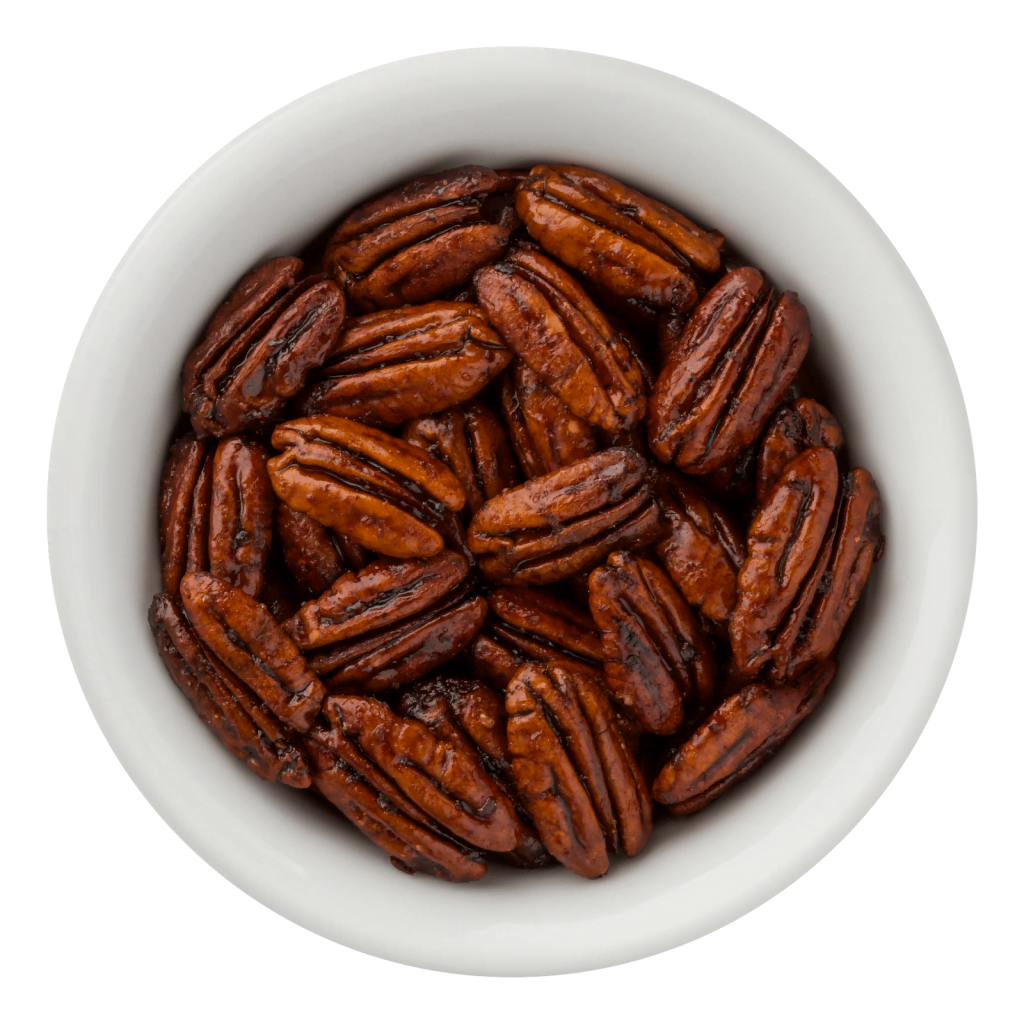
Nutritional Profile of Pecans
Pecans are highly nutritious, offering a good source of:
- Fats: High in monounsaturated fats, including oleic acid, and contain some polyunsaturated fats, including Omega-3 alpha-linolenic acid (ALA).
- Protein: Provide a modest amount of protein.
- Fiber: Rich in dietary fiber, aiding in digestion.
- Vitamins: Contain vitamin E, some B vitamins, and vitamin A.
- Minerals: Rich in magnesium, phosphorus, zinc, iron, and potassium.
- Antioxidants: Packed with antioxidants, including ellagic acid, may have various health benefits.
Health Benefits of Pecans
- Heart Health: Pecans’ healthy fats, fiber, and antioxidants contribute to heart health.
- Digestive Health: The fiber in pecans supports a healthy digestive system.
- Weight Management: Though calorie-dense, pecans’ fiber and protein content can promote feelings of fullness, potentially aiding in weight management.
- Anti-Inflammatory Properties: Contains compounds that may have anti-inflammatory effects.
Ways to Serve Pecans to Kids
- Raw or Roasted: Enjoyed plain or lightly salted.
- In Oatmeal or Yogurt: Adds crunch and flavor.
- Baking: Used in cookies, muffins, or bread for a nutty flavor.
- With Vegetables: Chopped and sprinkled over cooked vegetables for texture.
- In Pecan Butter: Blended into nut butter and spread on bread or crackers.
Pecans are a flavorful and nutritious food that can be a great addition to a child’s diet. Rich in healthy fats, including Omega-3s, vitamins, minerals, and antioxidants, they offer several health benefits, from heart health to digestive support. Their versatility in cooking and pleasing taste can make them a favorite for children when prepared in various ways. Attention to safety considerations, such as allergies and choking hazards, ensures that pecans are not only a healthful addition but a safe one. Through mindful selection and creative incorporation into meals and snacks, pecans can provide both nourishment and enjoyment for children and the whole family.
5. Pumpkin Seeds
Pumpkin seeds, also known as pepitas, are edible seeds from pumpkins. These seeds are often overlooked but are a nutritional powerhouse that can be valuable to diets, especially for children. Here’s a detailed examination of pumpkin seeds:
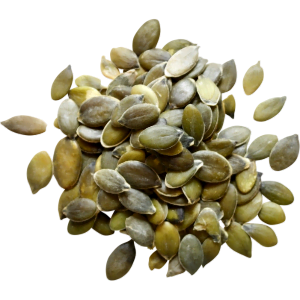
Nutritional Profile of Pumpkin Seeds
Pumpkin seeds are packed with essential nutrients, including:
- Omega-3 Fatty Acids: Contains alpha-linolenic acid (ALA), a plant-based Omega-3 fatty acid.
- Protein: A good source of plant-based protein.
- Fiber: High in dietary fiber that supports digestion.
- Minerals: Rich in magnesium, iron, zinc, phosphorus, and manganese.
- Vitamins: Contains various vitamins such as vitamin E, some B vitamins, and vitamin K.
- Antioxidants: Offers antioxidants like carotenoids and vitamin E, which can reduce inflammation.
Health Benefits of Pumpkin Seeds
- Heart Health: Pumpkin seeds’ Omega-3s, magnesium, and antioxidants support cardiovascular health.
- Bone Health: High in phosphorus and magnesium, essential for bone formation.
- Immune Support: The zinc content helps in immune system function.
- Anti-Inflammatory: Contains compounds with anti-inflammatory properties.
- Sleep Support: Contains tryptophan, which may promote better sleep.
Ways to Serve Pumpkin Seeds to Kids
- Snacking: Roasted and lightly salted as a nutritious snack.
- Smoothies: Blended into smoothies for extra nutrition.
- Baking: Incorporated into muffins, bread, or cookies.
- Salads and Cereals: Sprinkled on top for a crunchy texture.
- Pumpkin Seed Butter: A spreadable alternative to peanut butter.
Pumpkin seeds are more than a seasonal treat; they’re a nutritious food that offers various health benefits, from supporting heart health to aiding sleep. They’re a tasty source of Omega-3 fatty acids, fiber, protein, vitamins, and minerals. The ways to include pumpkin seeds in a child’s diet range from snacks to baking to breakfast additions. As with other seeds and nuts, safety considerations such as potential allergies and choking risks should be considered. By incorporating pumpkin seeds into your child’s diet, you can provide nourishing, flavorful, and enjoyable options that contribute positively to their overall health and well-being.
6. Shrimp
Shrimp is a popular seafood enjoyed by many around the world. It’s known for its sweet taste and firm texture and is often used in various culinary dishes. Here’s a detailed look at shrimp:
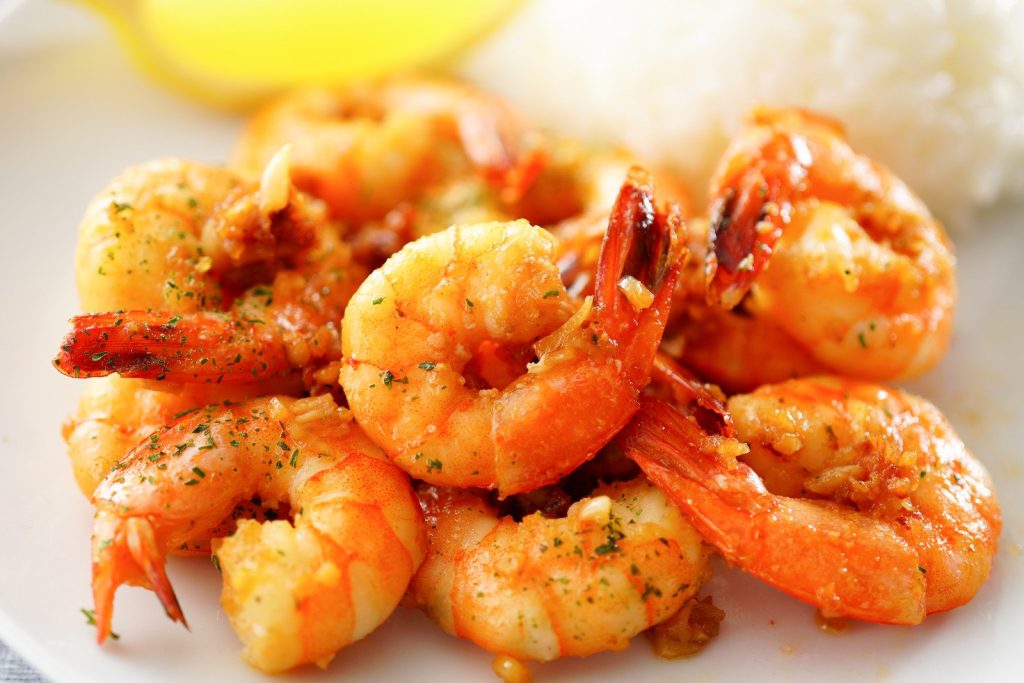
Nutritional Profile of Shrimp
Shrimp is rich in several nutrients, including:
- Protein: High-in-quality protein, providing all the essential amino acids.
- Omega-3 Fatty Acids: Contains EPA and DHA, two important types of omega-3s.
- Minerals: A good source of selenium, iodine, phosphorus, and zinc.
- Vitamins: Contains B vitamins, especially B12 and Vitamin D.
- Cholesterol: Known for its relatively high cholesterol content, though this doesn’t necessarily impact blood cholesterol levels in most individuals.
Health Benefits of Shrimp
Shrimp is a popular seafood that is not only delicious but also packed with various nutrients that can provide numerous health benefits. Here’s an elaboration of the health benefits associated with consuming shrimp:
- High in Protein: Shrimp is an excellent source of lean protein, vital for growth and development, especially in children. It can help build and repair tissues and produce enzymes and hormones.
- Low in Calories: With its low-calorie content, shrimp can be an excellent option for those looking to manage their weight. It provides essential nutrients without adding excessive calories to the diet.
- Rich in Antioxidants: Shrimp contains the antioxidant astaxanthin, which has been shown to reduce inflammation and oxidative stress. This may help protect against chronic diseases such as heart disease and cancer.
- Source of Omega-3 Fatty Acids: Omega-3 fatty acids found in shrimp can promote heart health by reducing triglycerides, lowering blood pressure, and preventing the formation of harmful blood clots.
- Contains Essential Vitamins and Minerals: Shrimp is rich in vitamins such as B12, vital for nerve health and the production of red blood cells. It also contains minerals like selenium, phosphorus, and iodine, which affect thyroid function, immune system support, and bone health.
- Supports Brain Health: Shrimp’s Omega-3 fatty acids may benefit brain health by enhancing cognitive function, reducing symptoms of depression, and supporting the growth of neural tissues.
- Good for Eye Health: The antioxidants in shrimp, including astaxanthin, may protect the eyes from age-related macular degeneration and cataracts.
- Improves Hair and Skin Health: Shrimp’s protein, vitamins, and minerals can contribute to healthy hair and skin, providing structural support and enhancing appearance.
- Reduces the Risk of Chronic Diseases: The anti-inflammatory properties of shrimp may reduce the risk of developing chronic conditions like heart disease, obesity, and diabetes.
- Supports Digestive Health: The protein content in shrimp helps support digestion, while the zinc content aids the body in the digestion and metabolism of nutrients.
- Good Source of Iron: Iron in shrimp is necessary for transporting oxygen in the blood, and deficiency can lead to anemia.
Shrimp is a nutrient-dense food that offers a range of health benefits, from supporting heart and brain health to promoting healthy growth and development. Including shrimp in a balanced diet can contribute to overall well-being, but it’s essential to be mindful of its origin and individual health considerations like allergies.
Creative Ways to Serve Shrimps to Kids
Serving shrimp to children can be an enjoyable culinary adventure, as this tasty seafood is versatile and pairs well with various flavors. Here are some creative and kid-friendly ways to serve shrimp:
- Shrimp Tacos with Mild Salsa: Serve shrimp in a soft taco shell with lettuce, cheese, and mild salsa. Kids can have fun building their tacos!
- Coconut-Crusted Shrimp: Coat shrimp in shredded coconut and breadcrumbs and bake until crispy. Serve with a mild dipping sauce.
- Shrimp Skewers: Thread shrimp onto skewers with vegetables like cherry tomatoes and bell peppers, then grill. Serve with a child-friendly dip like yogurt-based ranch.
- Shrimp and Cheese Quesadillas: Mix cooked shrimp with cheese, fold into a tortilla, and then grill.
- Shrimp Fried Rice: Combine shrimp with rice, peas, carrots, and scrambled eggs for a homemade fried rice dish.
- Shrimp Mac and Cheese: Add cooked shrimp to mac and cheese for a protein boost.
- Shrimp Pasta Salad: Toss cooked shrimp with pasta, diced cucumbers, cherry tomatoes, and a creamy dressing.
- Shrimp and Veggie Stir Fry: Cook shrimp with colorful bell peppers, snap peas, and serve over rice or noodles.
- Shrimp Lettuce Wraps: Allow children to scoop shrimp salad into lettuce leaves for a fun and crunchy wrap.
- Shrimp and Avocado Boats: Fill avocado halves with shrimp, corn, and mild salsa.
- Shrimp Pizza Bites: Place a shrimp, a slice of cheese, and a dab of pizza sauce on a whole wheat cracker, then bake until melty.
- Shrimp Sushi Rolls: If your child is adventurous, make shrimp sushi rolls together using cooked shrimp, rice, and veggies.
- Shrimp Spring Rolls: Encase shrimp, rice noodles, and julienned vegetables in rice paper for a fresh and tasty treat.
- Creamy Shrimp Dip: Blend cooked shrimp with cream cheese and herbs for a spread that can be enjoyed with crackers or vegetable sticks.
- Shrimp Stuffed Bell Peppers: Stuff bell peppers with a mixture of cooked shrimp, rice, and mild seasonings, then bake.
- Shrimp Burger Sliders: Create shrimp patties mixed with breadcrumbs and mild seasonings, then serve on mini buns.
- Shrimp Popsicles: Bread and fry shrimp, then insert sticks into the thick end and serve with dipping sauce. They look like popsicles but are a savory treat!
- Shrimp Nachos: Layer shrimp, cheese, and mild salsa over whole grain tortilla chips, then bake.
- Shrimp and Mashed Potato Boats: Serve shrimp over a scoop of mashed potatoes for a comforting and visually appealing dish.
- Shrimp and Vegetable Muffins: Bake a mixture of shrimp, eggs, cheese, and finely chopped vegetables in muffin tins for an easy-to-eat meal.
- Shrimp and Cucumber Sandwiches: Serve shrimp salad between slices of whole grain bread or inside hollowed-out cucumber halves for a refreshing sandwich.
By presenting shrimp in these fun and innovative ways, you can create meals appealing to children’s tastes and curiosity, helping them enjoy this nutritious and flavorful seafood.
Shrimp is a delicious and nutritious option, rich in protein, omega-3 fatty acids, vitamins, and minerals. It offers flexibility in culinary applications and can be an excellent addition to a balanced diet, even for children. However, parents should be mindful of potential allergies and consider quality and sustainability when purchasing shrimp. Shrimp can be a delightful and wholesome food for various dishes and cuisines by making informed choices.
7. Tuna
Tuna is a saltwater fish known for its rich flavor, firm texture, and nutritional value. It’s one of the most popular types of fish consumed worldwide, available in various species and used in different culinary applications. Here’s a detailed look at tuna:
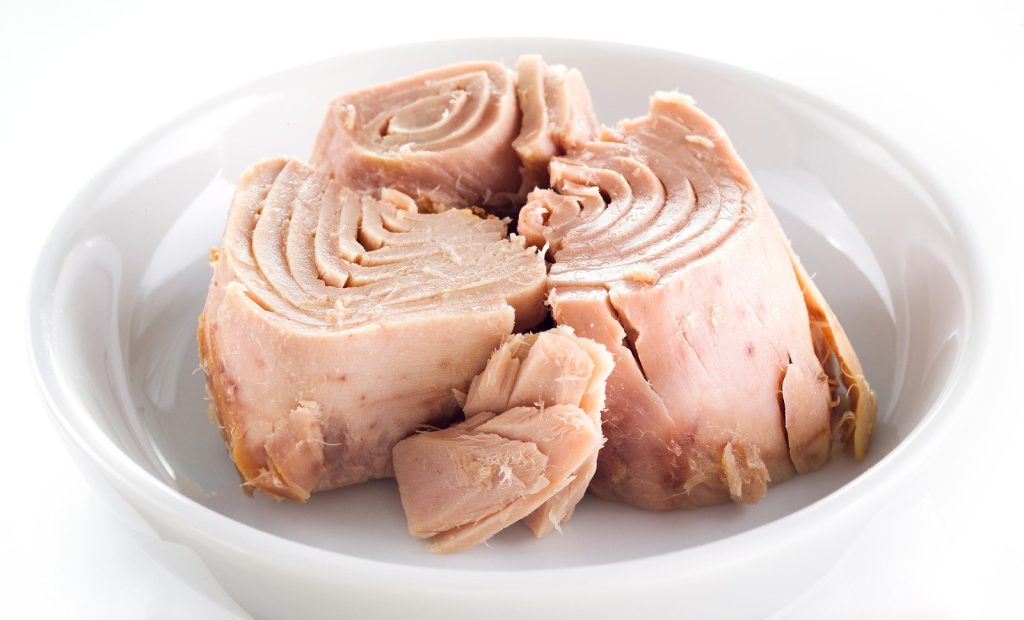
Nutritional Profile of Tuna
Tuna offers an array of essential nutrients:
- Protein: An excellent source of high-quality protein, providing all essential amino acids.
- Omega-3 Fatty Acids: Rich in omega-3s, particularly EPA and DHA, which are known for their health benefits.
- Vitamins: Contains essential vitamins like B12, niacin, and Vitamin D.
- Minerals: Good source of selenium, magnesium, and phosphorus.
Health Benefits of Tuna
- Heart Health: Omega-3 fatty acids in tuna help reduce the risk of heart diseases and promote healthy cholesterol levels.
- Brain Development: DHA supports cognitive function and brain development, particularly in children.
- Weight Management: Low in calories and high in protein, making it suitable for weight control.
- Muscle Growth: Rich protein content supports muscle growth and repair.
Culinary Uses of Tuna
Tuna can be prepared and enjoyed in various ways:
- Sushi and Sashimi: Japanese cuisine often uses Fresh, high-quality tuna.
- Grilled or Seared: Tuna steaks can be grilled or seared for a meaty texture.
- Canned Tuna: Convenient and versatile, used in salads, sandwiches, casseroles, and more.
- Tuna Salad: Mixed with mayonnaise, celery, and other ingredients for a classic dish.
Creative Ways to Serve Tuna to Kids
Tuna is a nutritious source of protein and omega-3 fatty acids, but sometimes children might find it unappealing. Here are some creative ways to serve tuna to children to make it more attractive and delicious:
- Tuna Fish Sandwiches with a Twist: Mix tuna with mayo and some chopped veggies like celery or carrots. Serve it on whole wheat bread cut into fun shapes using cookie cutters.
- Tuna Melt Quesadillas: Place a scoop of tuna salad and cheese between the tortillas, then grill.
- Tuna Pasta Salad: Combine tuna with cooked pasta, diced veggies, and a child-friendly dressing like ranch.
- Tuna and Cheese Croquettes: Make balls or patties from a mix of tuna, mashed potatoes, and cheese, then bread and fry them.
- Tuna Sushi Rolls for Kids: Create sushi rolls using tuna, sticky rice, cucumber, and avocado. This can be a fun cooking project to do together!
- Tuna Casserole Bites: Make a tuna casserole and bake it in mini muffin tins for child-sized portions.
- Tuna Stuffed Tomatoes or Bell Peppers: Hollow out cherry tomatoes or small bell peppers and fill them with tuna salad.
- Tuna Pizza: Add tuna to a pizza along with other child-friendly toppings.
- Tuna and Vegetable Skewers: Grill or bake skewers of tuna chunks, cherry tomatoes, and bell peppers.
- Tuna Sliders: Create mini tuna burgers with tuna, bread crumbs, and seasonings. Serve on slider buns.
- Tuna Pot Pie: Make individual tuna pot pies using puff pastry or pie crust, tuna, and mixed veggies.
- Tuna and Avocado Wrap: Mix and spread tuna with mashed avocado on a whole wheat wrap with lettuce.
- Creamy Tuna Dip: Blend tuna with cream cheese, herbs, and a little lemon juice for a tasty dip for crackers or vegetable sticks.
- Tuna-Stuffed Deviled Eggs: Mix tuna with egg yolks, mayo, and seasonings, then spoon back into the egg whites.
- Tuna and Rice Cakes: Serve tuna salad on top of whole grain rice cakes.
- Tuna Cracker Stacks: Layer tuna salad, cheese, and whole grain crackers to make tasty stacks.
- Baked Tuna Nuggets: Coat tuna chunks in breadcrumbs and bake until golden brown.
- Tuna and Potato Pancakes: Mix tuna with shredded potatoes, shape into pancakes, and pan-fry.
- Tuna Mac and Cheese: Stir tuna into homemade or store-bought mac and cheese for extra protein.
- Tuna Taco Boats: Serve tuna salad in small taco shells or tortilla boats with shredded lettuce and cheese.
- Tuna and Veggie Stir Fry: Stir-fry tuna chunks with colorful vegetables and serve over rice.
- Tuna Salad in Cucumber Cups: Hollow out cucumber slices and fill with tuna salad for a refreshing snack.
- Tuna Omelettes or Scrambled Eggs: Add flaked tuna to omelets or scrambled eggs, cheese, and vegetables.
- Tuna Lettuce Wraps: Serve tuna salad in lettuce leaves for a low-carb option.
These creative ideas can make tuna more appealing to children by presenting it in fun and familiar ways, blending it with other flavors they enjoy, or incorporating it into interactive meals they can help prepare.
Tuna is a nutritious and versatile fish that fits well into many diets. Its high protein content, rich omega-3 fatty acids, and essential vitamins and minerals make it an excellent choice for overall health. When serving tuna, especially to children or pregnant women, it’s wise to be aware of the type of tuna and its mercury content. Choosing responsibly sourced tuna that adheres to sustainable fishing practices can also contribute to the health of our oceans. From sushi to sandwiches, tuna offers many culinary possibilities and remains a beloved choice for many families.
8. Walnuts
Walnuts are an exceptionally nutritious and versatile food rich in Omega-3 fatty acids, making them suitable for children. Here’s a closer look at why walnuts are an excellent option for children’s diets:
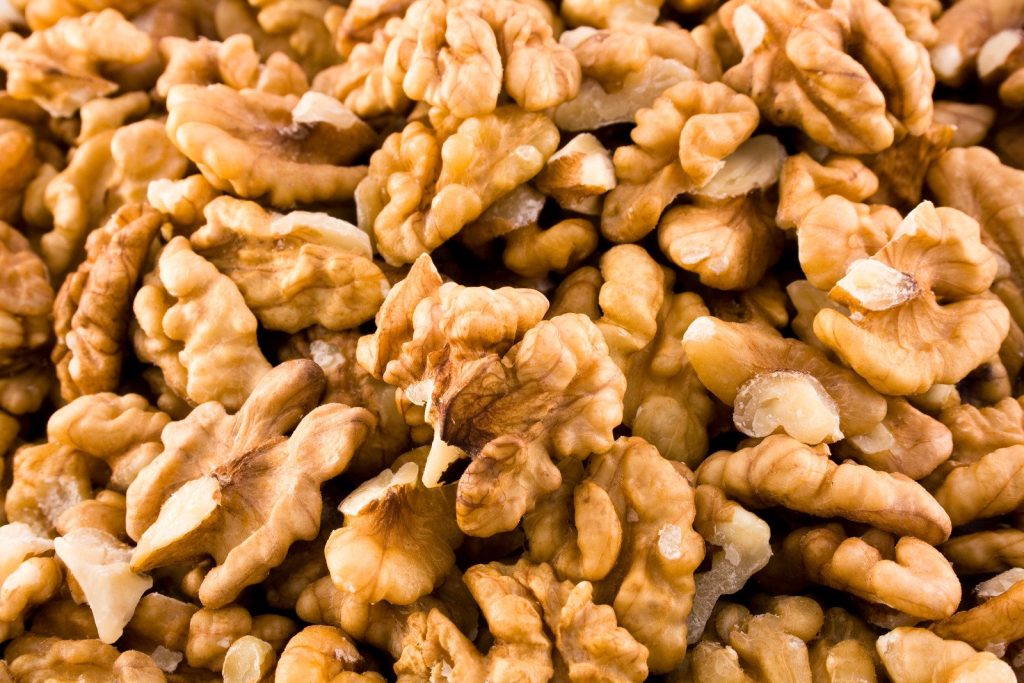
Nutritional Profile of Walnuts
Walnuts are packed with beneficial nutrients:
- Omega-3 Fatty Acids: Particularly rich in alpha-linolenic acid (ALA), a plant-based omega-3 vital for heart health.
- Proteins: Contain protein essential for the growth and maintenance of bodily tissues.
- Vitamins: Source of vitamins like B6, E, and folate.
- Minerals: Provide minerals such as magnesium, phosphorus, and copper.
- Dietary Fiber: Contribute to digestive health.
- Antioxidants: Rich in antioxidants, including polyphenols, protecting against cellular damage.
Benefits of Walnuts for Children:
- Brain Development: Omega-3s are essential for children’s brain growth and cognitive development. ALA in walnuts can be converted into other forms of Omega-3s, such as EPA and DHA, in the body.
- Heart Health: Omega-3s help maintain healthy cholesterol levels and promote overall heart health, even in childhood.
- Immune Support: The nutrients in walnuts can support the immune system, which is vital for children’s health.
- Healthy Snacking: Walnuts can be a satisfying snack that provides sustained energy for active kids.
How to Include Walnuts in Kids’ Diet:
- As a Snack: A small handful of raw or roasted walnuts can be an excellent snack for older children.
- In Breakfast Foods: Chopped walnuts can be added to oatmeal, yogurt, or breakfast cereals.
- In Baking: Walnuts can be included in muffins, pancakes, or bread for added texture and nutrition.
- In Smoothies: Blending walnuts into smoothies can add creaminess and nutritional value.
- With Fruits and Cheese: Combining walnuts with fruits or cheese can create a balanced and appealing snack or meal.
Walnuts are a nutrient-dense food, providing a rich source of omega-3 fatty acids, vitamins, minerals, and antioxidants. Their health benefits, from heart health to cognitive support, make them valuable to a balanced diet. Enjoying walnuts in various culinary applications, from snacking to cooking, makes them a versatile and tasty option.
-
Product on sale
 D-Omega Drops 30 mlOriginal price was: $ 19.00.$ 15.00Current price is: $ 15.00.
D-Omega Drops 30 mlOriginal price was: $ 19.00.$ 15.00Current price is: $ 15.00.

